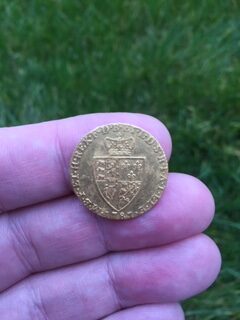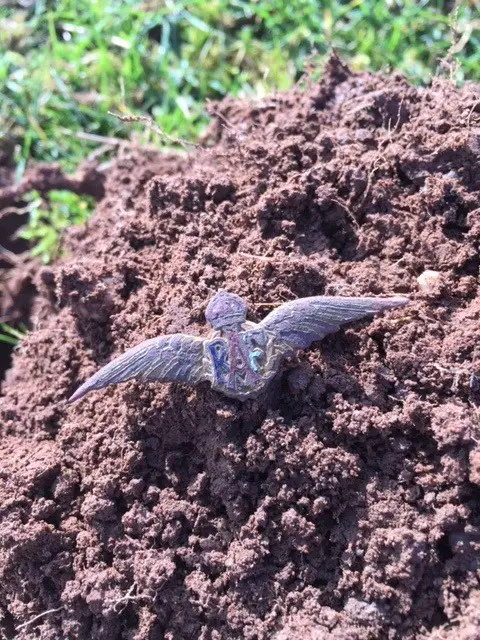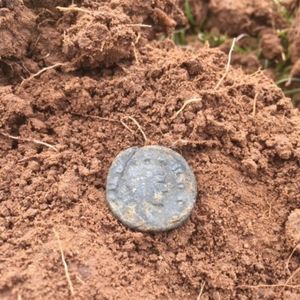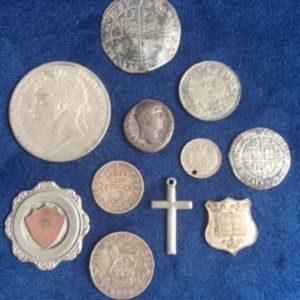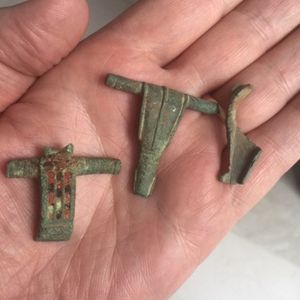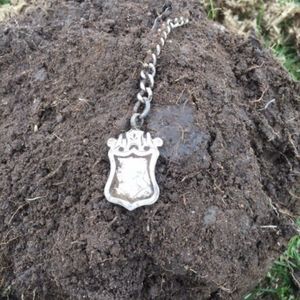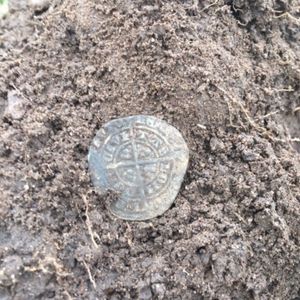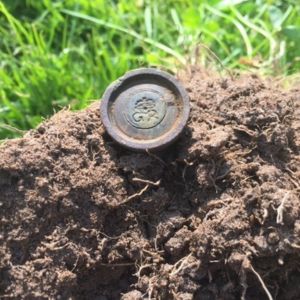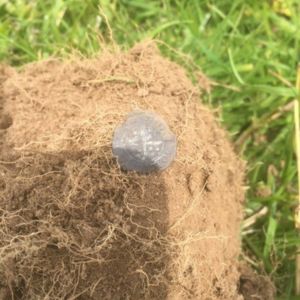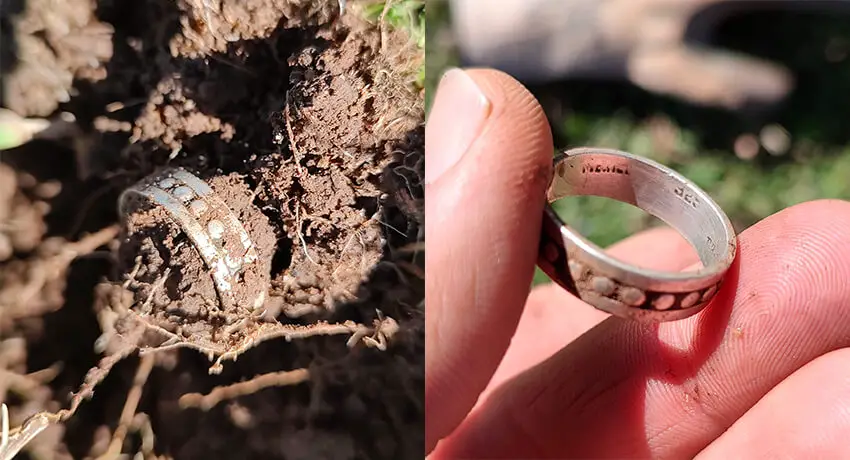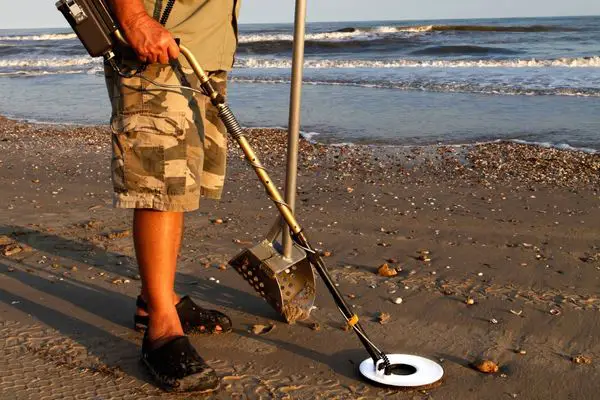Roman coins were mostly made from bronze which is mostly Copper and approximately 12% Tin, Silver and Gold. As silver became more scarce, a tendency to “debase” the silver coinage was prolific.
This process increased the copper content and decreased the silver content. The earliest Roman coinage dates from 241BC and continued through to approximately 498-518AD.
This then lead into what is know as the Byzantine period.
Roman emperors timeline

Before continuing into some Roman coins facts, it might be a good idea to establish a timeline of Roman emperors just to get some idea of how everything slots together.
Can I just say at this point that I am by no means an expert on Roman coinage but a dedicated metal detecting enthusiast that has unearthed some great Roman finds over the years.
Over these years, it’s been really fun to look into these finds and gain more knowledge about them.
When you’ve been detecting for a while, you begin to recognise familiar heads of certain emperors but believe me, there are quite a few!
If you are looking into finding a new hobby and fancy exploring metal detecting, you can check out my other articles. You can see how to clean Roman coins in my article how to clean old coins here.
You can look to see if, is metal detecting worth it here and also look into my article about how and where to start metal detecting for beginners here. Let’s now look into the Roman emperors timeline.
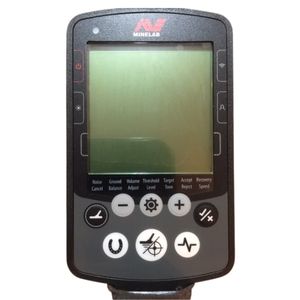
The Minelab Equinox 800
The ultimate and original multi frequency machine that has opened up a whole new world in detecting technology.
Deep detection and constant stable target identification.
Period 1 – The Republic and Imperatorial era (753BC-31BC)
Rome was founded approximately around early 750-753BC. (Before Christ) During this period, it was ruled by certain kings. The last of these kings was thought to be known as Tarquin the Proud.
He was basically got rid of around 509BC when the Republic was initially set up by a couple of Consuls who were elected every year.

This Republic lasted for a while and it’s documented that its finish was around 31BC.
It was this time when a guy called Octavian defeated Mark Antony who was his last rival at the battle of Actium.
It basically goes that after this, Octavian was able to put in place measures for him becoming the Emperor Augustus.
It’s quite well known that the Republican period had widespread and varied silver coinage but when it came to the period’s bronze coinage, it was decidedly lacking.
These were generally crude irregular lumps shaped as discs or bars. The earliest coins that would be recognisable here would date from 241BC to 215BC.
At this stage, they would have the head of a deity on them, not an emperor.
The Imperatorial period moves us close to the end of the Republic period when familiar names like Pompey and Caesar were squabbling for ultimate power. This is when we see their names and heads on bronze coinage.
This now puts us on the Roman emperor timeline of about 31BC which is when Octavian, who we’ve touched on is friends with Caesar and is known as Emperor Augustus.
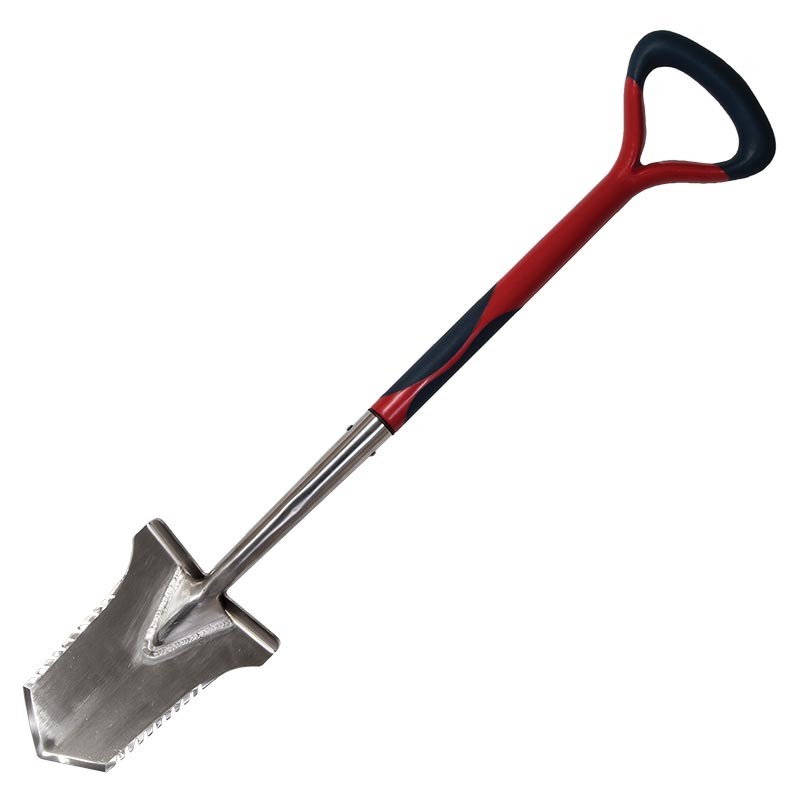
The Evolution Pro Cut
The ultimate accessary for the serious metal detectorist. Super strong, stainless steel specially designed spade.
Period 2 – The Early Empire (31BC-260AD)
During this period, base metal coins denominations made from copper and bronze were commonly used. There wasn’t much variety however and only consisted of four coin sizes.
These four coins were known as a Sestertius, an “As”, a “Half-As” (No jokes here!) and a “Quarter-As”.
These coins were made from something called Orichalcum which is basically copper that has been smelted along with a certain type of earth that has zinc oxide in it.
It gave the coins a golden colour at the time and was considered more valuable than copper.

Just finally, you can also get a coin called a Dupondius. It can be confused with an “As” as they happen to be the same size.
When they were made however, they would of been different colours so instantly more recognisable. Over time, they become very difficult to separate.
It was around 54AD to 68AD when the familiar Nero reigned that the practice of putting the head of the Emperor on the obverse of a coin really came into being.
The initials “SC” were also prolific which means (by decree of the Senate)
The timeline of the Emperors now consist of:
Augustus (31BC – 14AD), Tiberius (14 – 37AD), Caligula (37 – 41AD), Claudius I (41 – 54AD), Nero (54 – 68AD), Galba (68 – 69AD), Vitellius (69AD), Vespasian (69 – 79AD), Titus (79 – 81AD).
Domitian (81 – 96AD), Nerva (96 – 98AD), Trajan (98 – 117AD), Hadrian (117 – 138AD), Antonius Pius (138 – 161AD), Marcus Aurelius (161 – 180), Commodus (177 – 192AD), Pertinax (193AD).
Didius Julianus (193AD), Septimus Severus (193 – 211AD), Caracalla (198 – 217AD), Diadumenian (217 – 218AD), Elagabalus (218 – 222AD), Severus Alexander (222 – 236AD), Maximus (235 – 238AD).
Balbinus (238AD), Pupienus (238AD), Gordian III (238 – 244AD), Philip I (244 – 249AD), Philip II (247 – 249AD), Trajan Decius (249 – 251AD), Hostilian (251AD), Trebonianus Gallus (251 – 253AD).
Volusian (251 – 253AD), Aemilian (253AD), Valerian (253 – 260AD), Saloninus (258 – 260AD) and finally Gallienus (253 – 268AD)
I did say there were a few emperors didn’t I….! It basically travels from 31BC to 268AD. Interestingly, some of these emperors didn’t last long at all.
Many were bumped off only after a short reign by rivals. Some rivals even minted coins whilst contesting the current emperor! This now moves us into Period 3 which many know as the Radiate period.

Ultimate Tactical Packs!
Carry everything you’ll need for a detecting day like a First Aid kit, detector spares, finds boxes, batteries, snacks and drinks to rehydrate.
Never forget anything again with a belt pack!
Period 3 – The Radiate Period
It was around this period where silver coins were becoming so debased, they virtually became bronze coins.
This debasing reduced the silver content by adding more copper. Sestertii, Dupondii and Asses were rarely minted during this time and the initials “SC” disappeared from base metal coins.
Continuing our timeline, our emperors are thus:
Claudius II Gothicus (268 – 270AD), Postumus (260 – 274AD), Aurelian (270 – 275AD), Tacitus (275 – 276AD), Florian (276AD), Probus (276 – 282AD), Carus (282 – 283AD), Numerian (283 – 284AD), Carausius (287 – 293AD), Allectus (293 – 296AD).
What were Roman coins called?
Roman currency
Very early Roman currency include coin denominations as the Litra, Half Litra and Quarter Litra, the Uncia, Semuncia, As, Half-As and Quarter-As (Quadrans), the Triens (Third of an As or 4 Uncia), Sextans (2 Uncia), Sestertius (4 Asses) and Dupondius. Silver coins include the Denarius.
How were Roman coins made?

Roman coins were made from gold, silver and bronze. The bronze coins consisted of mixed copper and tin which was smelted from various copper ores at high temperatures.
Silver was obtained in a similar way but very often the silver was mixed with copper to reduce the silver content. This is called debasing.
Molten hot metal was then poured into hot moulds to obtain a shape and then pounded on an anvil to gain the impression. This was called minting.
Final thoughts
This article was really intended to be an introduction to Roman coinage and to show you what you might typically find in the UK if out metal detecting.
The Romans also made elaborate lead tokens that were used for various interesting reasons. Read my article on lead tokens here.
Metal detecting is a great way to uncover roman coins and artefacts that otherwise might have been lost forever. Find out more about Roman brooch types here.
Coins from this period can fall into the definition of treasure. You can further read about the definition of treasure and the treasure process in my article about treasure definition here.
The feeling I still get when I find anything Roman is still there. The thought that you are the first person to touch that in what could be 1,800 years!
You might also be interested in what happened after the Romans left us and what you can find with my article on the Anglo Saxons and Vikings here!
Roman coins can be small and quite deep. It can sometimes make them very hard to find. If you find them, you’ll want to show them off. Why not read my article on metal detecting finds cases.
With the latest multi frequency metal detectors however, undetectable items are now detectable and a whole new world has opened up.
You can now get this technology for under £250! You can further read my article on multi frequency technology here.

Unbeatable Multi Frequency!
You can now get the ultimate power of multi frequency technology over single frequency detectors with the Minelab Vanquish range of detectors.
The entry level Vanquish 340 now gives you ultimate depth, stability and sensitivity on all target types in every soil, including wet beach sand.



